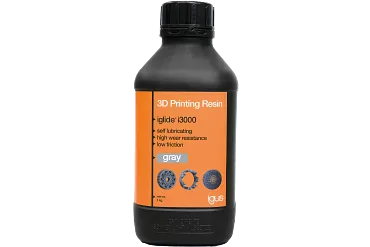Change Language :
World's 1st wear-resistant DLP resin for 3D printing of custom wear parts and gears
3D printing resin for wear parts and gears
DLP (Digital Light Processing) is a 3D printing technology used to rapidly produce photopolymer parts. It's very similar to SLA with one significant difference -- where SLA machines use a laser that traces a layer, a DLP machine uses a projected light source to cure the entire layer at once.
What is the DLP process?
Digital light processing (DLP) is a 3D printing process in which light-sensitive synthetic resins are cured layer by layer with UV light to create a three-dimensional object. In this process, the synthetic resin is located in a basin on the bottom of which is a glass surface through which UV light can pass. This surface is exposed to DLP projection. The core of the projection technology, developed by Texas Instruments, is an array of mirrors: the DMD (digital micromirror device). It consists of many micromirrors that divide the projected light into pixels.

What post-processing is needed?
After printing, the uncured resin must be removed from the printed shape. This is done with isopropyl alcohol - the shape is "washed". The support material is then removed, and the shape is cured in a UV chamber. Any support structure residue can still be ground away afterwards.
Contact Us
Questions or product information? Please contact:

Customer Service
Customer Service:
Phone: Monday to Friday from 8 am - 8 pm
LiveChat: 24 hours
Book a Call
Book an Appointment with a Product Expert

